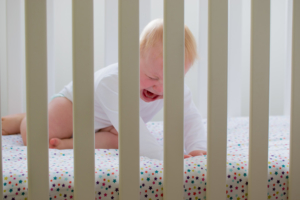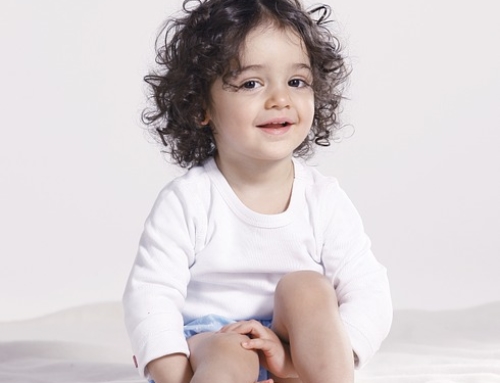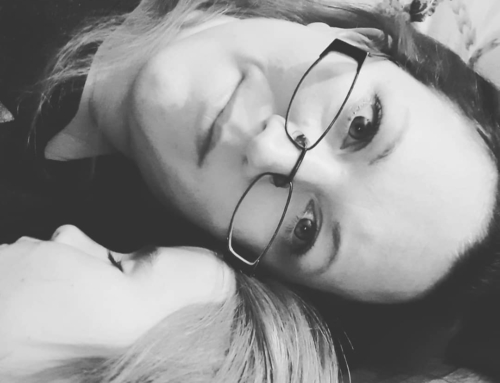
Does sleep training (the extinction kind) affect attachment?
This is a question that is often asked by so many parents. Many online blogs and others will tell you it must. After all, you respond sometimes, but not others, and what defines attachment? Consistent and sensitive responses.
But why, then, does the research continue to show that sleep training does NOT in fact affect attachment? Although there are many flaws in the research that is used to suggest this is the case, this is also found in studies that don’t have such flaws. For example, Higley and Dozier (2009) used excellent methodology to show that both mothers who were highly attuned and responsive to their children’s cries and those who didn’t at night were more likely to have secure attachment. I talked about this at length with Dr. Levita D’Souza (an attachment researcher and clinician) on my podcast, and there are many different possibilities as to why this would be the case. I don’t want to go into all of them, but rather, I want to take time to talk about why attachment in the moment may not be the benchmark we should be looking for and what we should be looking for.
Let’s start with the fact that attachment in the moment is based on hundreds of experiences. Sleep training may only make up a small percentage of those and that means our system shouldn’t incorporate those fewer instances if there are many more in which we are responsive and sensitive. Second, our children don’t know that we aren’t responding because we choose not to. This may matter in how they perceive the event and it’s their perception that matters to their attachment. Finally, to have insecure attachment to a caregiver at such a vulnerable age does require more quite a bit in terms of how we respond to our kids because no matter what, they have to rely upon us and want to have that strong bond.
So if attachment at that age isn’t what we look at, what is? There are three areas that I believe is where research should be going. The first is later attachment patterns and I base this idea off other research studies looking at the experiences of childhood trauma on later attachment. For example, research on older children who were briefly separated from their parents during exposure to a traumatic event (in this case, bushfires in Australia) and found that being separated from parents (even parents with whom they had a secure attachment) was strongly associated with an avoidant attachment style as an adult (Bryant, Creamer, O’Donnell, Forbes, Felmingham, et al., 2017).
The second is the experience of trauma or perhaps even viewing sleep training as an adverse childhood event (ACE). If you don’t know much about ACEs or trauma, let’s start by what they mean. Trauma is simply a deeply distressing or disturbing event. There is no inherent notion of long-term effects or anything like that in the definition (and I’ll get to that). I think it’s fair to think that for at least some children, sleep training is traumatic, depending on a host of factors including childhood temperament. When we think of ACEs, they are potentially traumatic events that occur in childhood. And they can happen to children who have secure attachments. Seriously – secure attachments actually help buffer their effects.
The current list of ACEs includes obvious ones of neglect and abuse (verbal, physical, and sexual) but also divorce, a parent incarcerated, poverty, a parent with substance abuse, and mental illness. Notably, each one raises the risk of later problematic outcomes, but none – even abuse – defines it. This is why many others are being considered for inclusion and some individuals working with families already do look at things like the experience of systemic racism and bullying. This list is ever-evolving so please don’t think the science is in that these are the only ACEs to consider. And of course, ACEs have to have a potentially strong enough effect across a large portion of the population to count. If it only affected 10% of the population, it likely wouldn’t be included, but would still be traumatic and problematic for that 10%.
Why would sleep training be potentially traumatic? Here is where we have to think about species-expectant behaviours. That is, what our babies are hardwired to expect in life and how sleep training violates some of those core assumptions often in young children who don’t have the capacity to contextualize what is happening. As precocial mammals, babies expect to be close to their caregiver at all times. This proximity is considered a ‘species-expectant behaviour’ and violating it may alter – and not for the best – a child’s trajectory.
I should be clear that I am not the first to recommend this consideration. Over at PACES Connection – a network focused on understanding ACEs and how to prevent and heal from ACEs – an article on why infants need their own list based on species-expectant behaviours exists. Crucially, a baby’s inability to understand events makes them particularly vulnerable to the effects of many different life events. And this is why research consistently shows that younger children who experience ACEs have higher likelihoods of negative consequences (e.g., McKelvey, Selig, & Whiteside-Mansell, 2017). Work by Dr. Darcia Narvaez and her idea of the Evolved Nest (a term that references the key features across small-band hunter-gatherer communities from which we evolved and thus highly species-expectant behaviours) goes into this idea at length and is worth a read if you’re interested (or a listen later this month to my podcast!) (e.g., Narvaez & Witherington, 2018; Tarsha & Narvaez, 2019).
How do these experiences cause potential problems? This brings me to the third area of research I would like to see more of – the stress response. When a traumatic event occurs there are two types of stress response – tolerable or toxic (positive stress can occur in life, but not in response to trauma). Tolerable stress is one we are able to overcome – it taxes us, but with appropriate support and understanding, we are able to move beyond it. Toxic stress, on the other hand, is stress that we don’t fully recover from and thus it can result in biological changes. I have an entire learning module on this topic through Breastfeeding Conferences Australia so I obviously can’t explain it all here, but I want to make a few key points:
- One of the crucial differences between the two comes from the social buffering of stress (or lack thereof). This is relevant when we’re talking about extinction methods of sleep training.
- The experience of stress is subjective. The same events won’t cause it for everyone, just as I mentioned above with respect to trauma. This is important because when we hear stories of sleep training being wonderful – or at least not traumatic – that doesn’t negate anything when we’re considering potential effects.
- Neurologically speaking, the effect of trauma affects emotional pathways in the brain the strongest. The problem for infants is that their emotional pathways are actually “teaching” their prefrontal cortex before it takes over and then starts to control those emotional areas (like the amygdala). This means it can be hard to disentangle the early effects from what might be perceived as just later normative behaviour.
There is so much more to discuss here, but hopefully this is enough to highlight how our singular focus on attachment at one time period is simply not helpful in moving research or our understanding of the potential effects of sleep training forward. It’s equally important to remember that these are potential effects. These are not guarantees and certainly not something that we would even expect for all children. There are several factors that influence the likelihood of events becoming toxic stress ones and we have to take all of that into account when we think about our babies and their sleep.
Relevant References
Higley, E., & Dozier, M. (2009). Nighttime maternal responsiveness and infant attachment at one year. Attachment & Human Development, 11(4), 347-363.
Bryant, R. A., Creamer, M., O’donnell, M., Forbes, D., Felmingham, K. L., Silove, D., … & Nickerson, A. (2017). Separation from parents during childhood trauma predicts adult attachment security and post-traumatic stress disorder. Psychological Medicine, 47(11), 2028-2035.
McKelvey, L., Selig, J., & Whiteside-Mansell, L. (2017, November). Patterns of Exposure to Adverse Childhood Experiences in infancy and toddlerhood: Exploring cognitive, psychosocial and health outcomes. In APHA 2017 Annual Meeting & Expo (Nov. 4-Nov. 8). American Public Health Association.
Narvaez, D., & Witherington, D. (2018). Getting to baselines for human nature, development, and wellbeing. Archives of Scientific Psychology, 6(1), 205.
Tarsha, M., & Narvaez, D. (2019). The Evolved Nest: A Partnership System that Fosters Child and Societal Wellbeing. Interdisciplinary Journal of Partnership Studies, 6(3), 1-1.






thank you for this post! i was wondering if you could clarify these last sentences: “ The problem for infants is that their emotional pathways are actually “teaching” their prefrontal cortex before it takes over and then starts to control those emotional areas (like the amygdala). This means it can be hard to disentangle the early effects from what might be perceived as just later normative behaviour.” I’m having trouble understanding what you mean by disentangling the early effects vs normative behavior, do you have any hypothetical examples? Thank you!
One might say: “Oh, my baby has always behaved like this!” so you think that is their normative behavior. They have always been shy, the have always been anxious… but is it? Or is that something that was originated from a traumatic event in life that “created those pathways” of behavior? One might never know, especially because of how early sleep training methods start to be implemented.